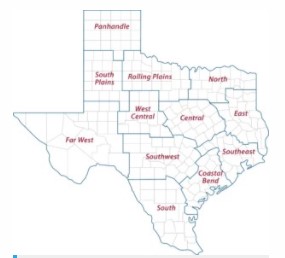Wholesale turkey prices are up and production is down amid looming uncertainty over how COVID-19 will impact traditional consumer trends this holiday season, according to a Texas A&M AgriLife Extension Service expert.

Production of whole turkeys is down this year, and prices are up as the industry grapples with uncertain holiday market demand due to COVID-19.
David Anderson, Ph.D., AgriLife Extension economist, Bryan-College Station, said the turkey market has been more interesting than normal going into the holidays.
Supply, demand and the subsequent pricing and marketing of holiday turkey in 2020 appears like it could be heavily influenced by COVID-19, Anderson said. Some aspects of the market are already being affected.
On the supply side, turkey production is down 7.7% for October compared to the same time last year, Anderson said. And overall production is down 2.7% for 2020 so far compared to 2019.
Turkeys in cold storage, which are typically stocked up for the holiday rush, were down 11.5% in September, he said.
“The turkey industry has struggled with profitability and some of the trends when it comes to consumer choices around the holidays and the consumer trends when it comes to deli meat,” he said. “You have producers trying to gauge demand and what the market will be, and that’s been difficult the last few years.”
Lower supplies have driven prices up this year, Anderson said. Wholesale turkeys, both tom, which are typically 16-24 pounds, and hen, which are 8-16 pounds, prices were 19% higher compared to last year due to tighter supplies.
Last year, wholesale turkey prices were 20% below the five-year average. Anderson said it would be interesting to see if retailers continue the practice of running specials on turkeys to draw shoppers.
But COVID-19 adds uncertainty surrounding typical holiday gatherings and the subsequent choices consumers will make this year, Anderson said.
A marketing survey by the Food Industry Association and marketing consultants, the Hartman Group, showed 33% of Americans will have fewer people at their traditional Thanksgiving celebrations. Around 26% of respondents said they would avoid long-distance travel.
“That’s interesting in relation to the normal demand side of all things related to these traditional holiday gatherings,” he said. “If people are scaling back, it will be interesting to see how the market for turkeys and traditional Thanksgiving dishes plays out.”
AgriLife Extension district reporters compiled the following summaries:

A map of the 12 Texas A&M AgriLife Extension districts.
CENTRAL
The district received much-needed rain, but experienced one of the driest Octobers on record. Most counties reported adequate soil moisture levels. Winter wheat and winter forages had not emerged. Planting plans remained in limbo pending sufficient moisture for seed germination. Planting wheat into dry soil was being considered by some producers. Rains slowed cotton harvest in some areas. With good weather, producers should finish cotton harvesting within a week. Winter crops were doing well now, but some were stressing due to lack of rainfall. Livestock body conditions were good with producers feeding hay and other supplemental feeding. Stock pond levels were holding steady.
ROLLING PLAINS
Conditions were cold and wet with some areas receiving rain, freezing rain and snow. Winter wheat that had emerged was in fair to good condition. The freezing rain covered some unharvested cotton plants in a layer of ice, but producers had not yet assessed how much yield and quality might be lost. Supplemental feeding of cattle continued in areas with pastures in poor condition.
COASTAL BEND
Conditions continued to dry out with very little rain reported. Some fieldwork occurred. Cool temperatures slowed rice grain maturity for harvest. Winter forages were being planted in some areas. Rangeland and pastures continued to decline due to lack of moisture and cooler temperatures. Livestock producers in drier areas were starting to feed hay. Many producers were weaning calves and culling herds to reduce pressure on available forage. Livestock auctions were reporting large runs of cattle. Some ranchers were practicing fall brush control. The pecan harvest continued with good yields reported.
EAST
A slow soaking rain fell across the district, giving many counties much-needed moisture. Winter forages in many areas looked better following the rain. Subsoil and topsoil conditions were adequate. A cold front that accompanied the rain dropped temperatures. Sabine County reported producers were getting ready to start feeding hay to cattle. The cattle market was up slightly. Cherokee County reported many producers were holding on to calves because of the low calf market. Livestock were in good condition. Feral hog activity was high and caused damage to many pastures and hay meadows.
SOUTH PLAINS
Farmers were busy stripping cotton ahead of rain in the forecast. There were reports of 2 inches of snow and sleet across the district. Most counties experienced a hard freeze with wintery mix of precipitation, which put cotton fields in bad condition. Fields were too wet to access and bolls received too much moisture, but producers affected hoped their crops can be salvaged. The moisture was much needed despite the delays. Many producers plan to plant wheat as soon as possible. Cattle continued to be in good condition with supplemental feeding.
PANHANDLE
Heavy rain, snow and ice fell across the district and halted all farming and harvest activities. Topsoil and subsoil moisture levels were adequate to surplus. Producers estimate it could be at least a 10-14 days without additional rain before they can enter fields again. Cotton was affected the most negatively by wet freezing rain. Immature bolls will not open, and open bolls showed lint stringing out to the ground. Remaining corn fields showed varying degrees of lodging. Most sorghum fields appeared to escape with only minor damage. Most wheat fields were planted. Wheat germination and stands were expected to be excellent following the arrival of sufficient moisture. Cattle on rangeland were given supplemental feed.
NORTH
Topsoil moisture throughout the district was mostly adequate. Temperatures dropped to the low 30s with rain over four days. Warm-season grasses were starting to play out amid cooler temperatures, and winter forages were being planted. Local calf markets were better in Van Zandt County. Feral hogs were very active.
FAR WEST
High temperatures averaged in the lower 90s before a cold front swept through with lows averaging in the mid-20s. The first frost was reported. Freezing rain, sleet and snow were reported with around 1 inch of snow accumulating. Cotton quality in fields was expected to take a hit after the freezing rain. Yields were below average. Winter wheat that was planted benefited from the moisture but needed more moisture to thrive. Small, irrigated fields of peanuts had not been harvested when the freeze occurred. Pecan producers turned off irrigation to their orchards and were hopeful the freeze did not hurt kernel maturation. Livestock continued to look good overall with supplemental feed.
WEST CENTRAL
Cold and wet conditions gave way to warmer temperatures. Rain and icy conditions brought the first freeze of the season that terminated warm-season crops. Cotton harvest halted. Some cotton was not completely mature, and the freeze damaged unopened bolls. Rainfall was very beneficial to the winter wheat crop. Wheat conditions were mostly good. Rangelands and pastures were in fair condition and showed some improvement as cool-season forages emerged. Livestock were in fair to good condition.
SOUTHEAST
Some rain was reported with the cool fronts that blew in. The burn ban was lifted for at least a week but may be restored without additional moisture. Cool-season forages were growing, and cool-season vegetables were starting to emerge. Some gardeners were reporting second half-crops of tomatoes. Soil moisture levels ranged from adequate to very short with adequate levels being the most common.
SOUTHWEST
Soil moisture, rangeland and pasture conditions were all declining across the district due to the lack of rainfall. Kinney County reported a half-inch of rainfall. The last hay was being cut and rolled. Some early pecan varieties were beginning to fall. Caldwell County reported cattle markets were down while sheep and goats were up. There were reports of increased predator activity. Livestock and wildlife were in fair condition with supplemental feeding. White-tailed deer pre-rut was starting.
SOUTH
Most of the district reported short to very short soil moisture levels. Starr and Cameron counties reported adequate soil moisture. Temperatures cooled with a cold front that dropped daytime temperatures into the 70s with nighttime lows in the 40s. No rainfall was reported. Coastal Bermuda grass was going dormant. Producers were prepping land for their next planting. Trees were starting to defoliate. Wheat and oat plantings continued, with the majority of the crop complete and irrigated fields emerging. Rangeland and pasture conditions continued to decline due to lack of rainfall. Cattle were in good condition. Supplemental feeding of livestock increased. Local cattle markets were depressed and seeing lower prices on all classes. Livestock producers were securing round hay bales to prepare for winter and were considering reducing their herds. Stock tanks were low in some areas. Dove season ended, but quail and deer season began; hunting reports were promising. Pecan harvest was underway with average yields reported. Producers continued to bale buffelgrass and harvest seed. Sesame harvest wrapped up. Some fall corn was planted. Vegetables looked good, and citrus was being harvested. A small number of farmers had planted greens.
Source : tamu.edu